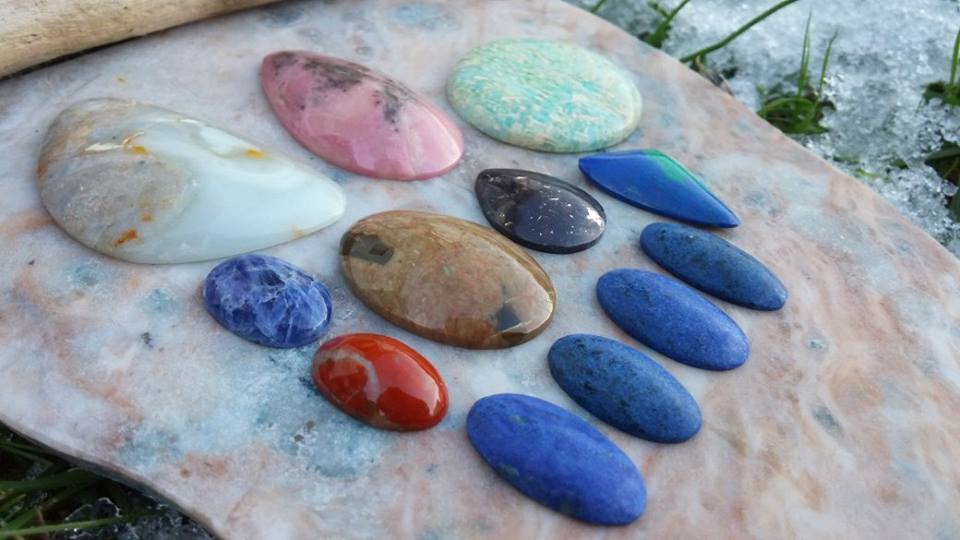Say you’re making a piece of jewelry for that special someone, (could be you!), but you can’t find exactly the right stone for it. You’ve been to rock and gem shops, shows and even looked on-line, but you are coming up empty-handed. What do you do? Settle for something that’s almost right, abandon your project in despair, or become a hermit? Well, before your rip out your hair in frustration, consider learning the art and craft of lapidary.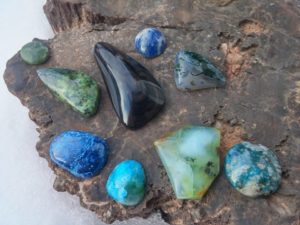
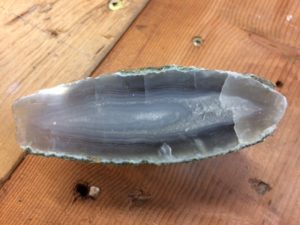
Mmmm,,,agate!
The word lapidary has its roots in the Latin word, “lapis” which means stone. “Lapidarius” meant stonecutter or one who works with stone and eventually evolved into lapidary, which refers to the occupation and the person doing it. Incidentally, lapis lazuli literally means “blue stone”. The first example of lapidary would have been approximately one million years ago when early people drilled holes into stones so that they could be worn on a leather cord or other such material. Fast forward to the ancient Egyptians who developed methods for cutting and polishing stones such as turquoise, lapis lazuli and amethyst. The funerary mask of Tutankhamen with all of its inlay work is a remarkable example of how skilled they were at lapidary. Lapidary was also done in India, Africa and Mesoamerica. Lapidary has been around since people learned that they could make pretty stones even prettier!
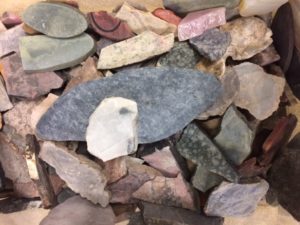
Rough slabs-great potential
Lapidary skills allow you much more creativity in your jewelry. If you find a slab or rock that is absolutely drool-worthy, you can cut it into the shape and size that you need. For example, if you find a beautiful slab of lace agate, you can decide which part of the stone you like best and cut and shape that part to get exactly what you want! The stones themselves can be inspiration for your jewelry designs so that you are creating truly one of a kind pieces.
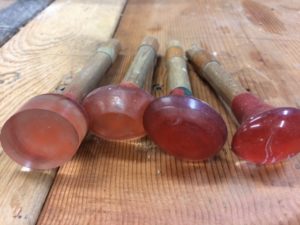
stages of grinding and polishing
What does lapidary involve? A rough stone is sawn into slabs of a thickness that can be set into jewelry. At this point, you look carefully at the slabs to see not only what parts you want to use, but also whether or not there are things to avoid, such as fractures. Once you have chosen the part most suitable, the basic shape is cut out. Then comes the fun part, grinding and polishing the stone to create the perfect piece for your jewelry. This is done on a series of wheels with increasingly fine grit (and lots of lubricant!).
The end result is a lovely shiny cabochon suitable for gracing the Crown jewels.Okay, maybe that’s a bit of a stretch, but nevertheless, a unique stone to set in your beautiful jewelry. A quick word about shape here: a lot of cabochons are oval or round, but as you gain skill and confidence, don’t be afraid to try different shapes. For inspiration, look at lapidary magazines and books or even just outside your window.
Above all, enjoy the process, knowing that the result is a one of a kind piece that you can be proud of!
You’ll find our Lapidary Classes HERE